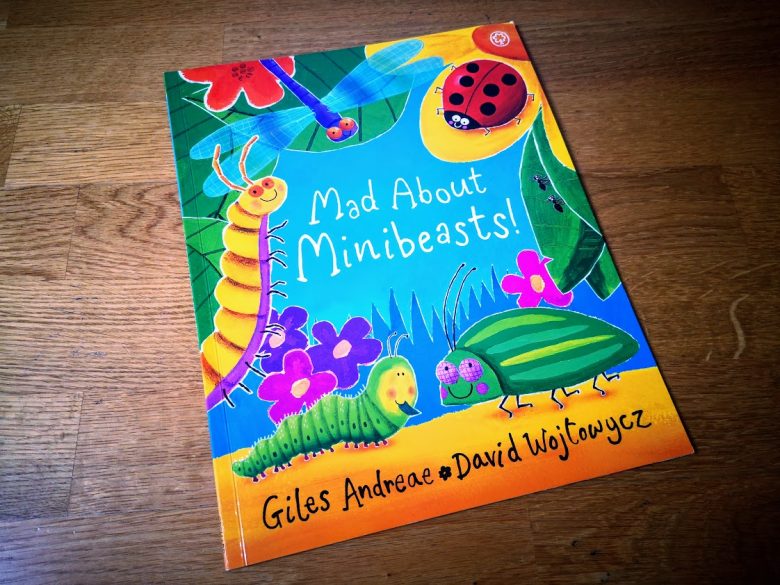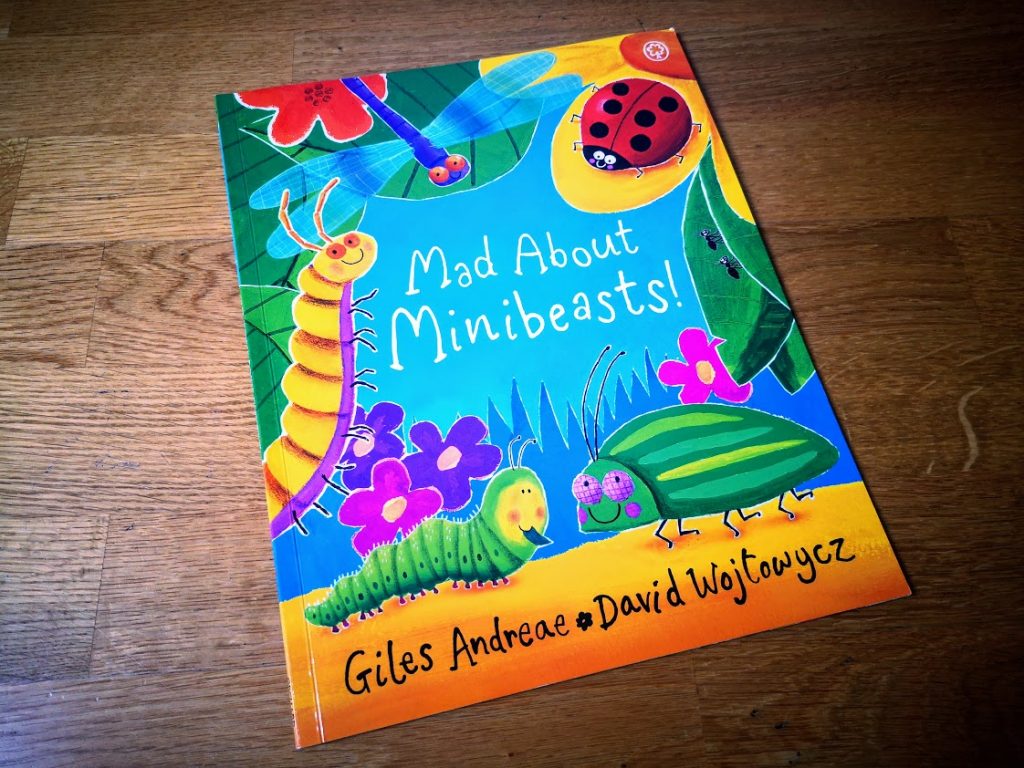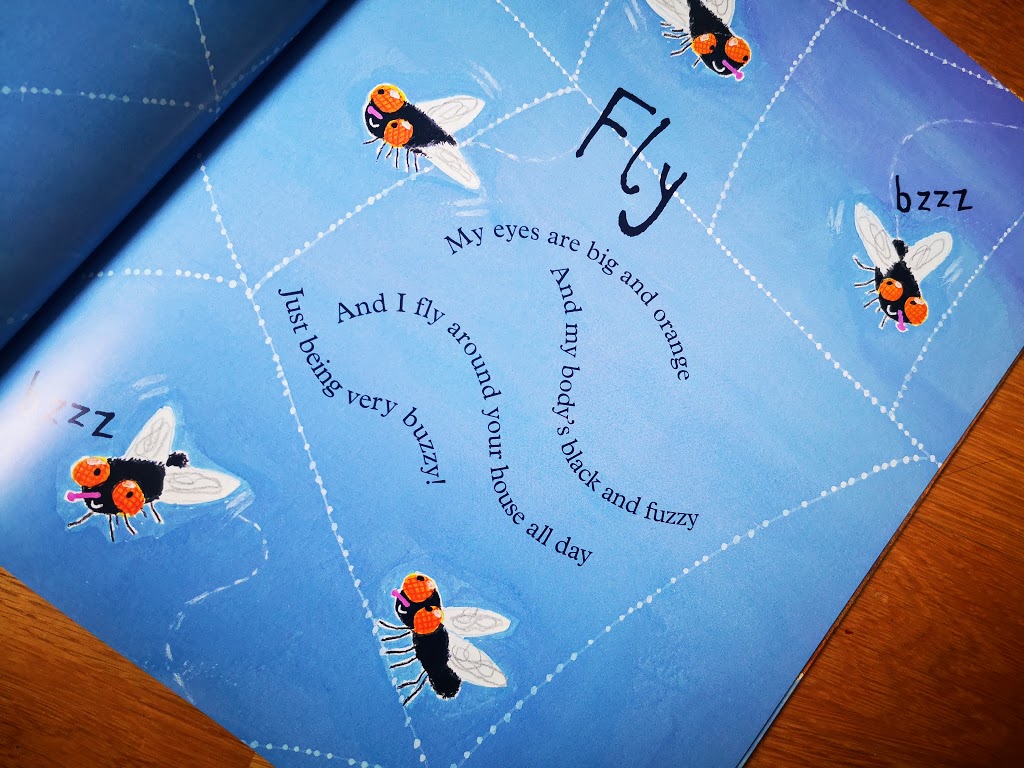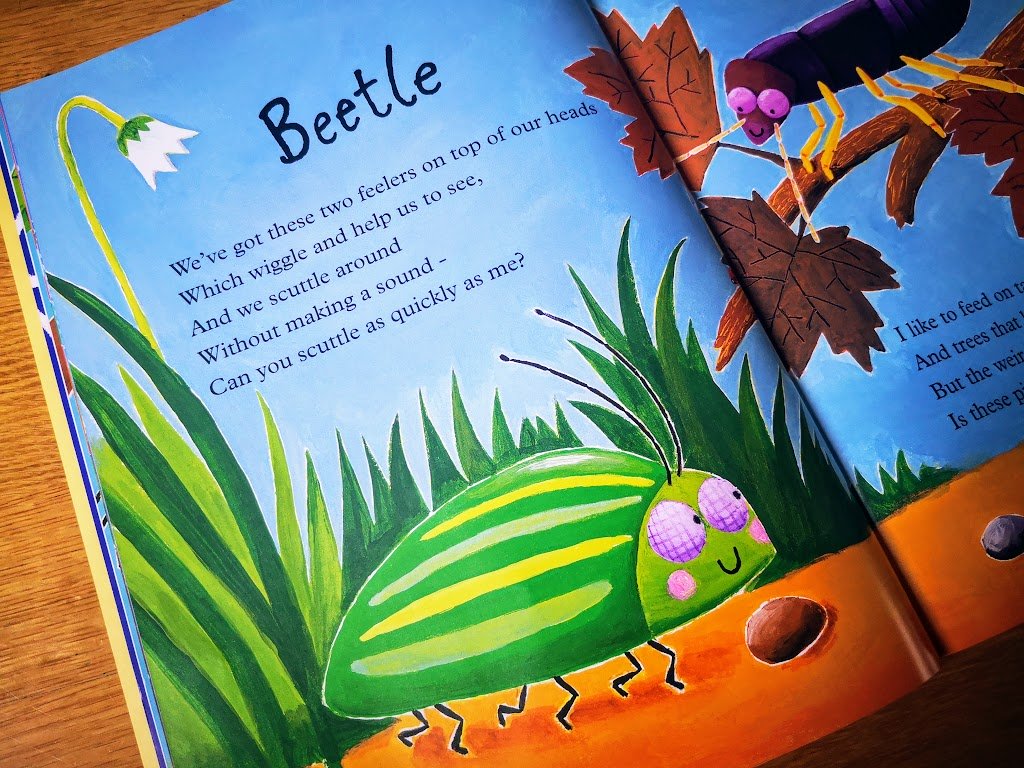“Mad about minibeasts” by Giles Andreae and David Wojtowycz is a collection of short rhymes dedicated to the most frequent bugs around us, accompanied by a one or two page illustration. A great tool to introduce the little ones to bugs and insects. The rhymes are simple, witty and catchy and combined with the colourful illustrations, teach the youngest ones a thing or two about each of the bugs, in a very engaging manner. It could be the noises that the bugs make, the way in which they move around, the environment in which they live, how their houses look like, what they eat. Little gosling likes to finish the poems and I let him say the last word.
This book always makes little gosling retell what he most enjoyed of our hikes. We had the book with us on his first hike in the Ardennes, some weeks ago. Coincidentally, we did some serious bug watching:) so it was a perfect fit. We saw ladybirds (with different numbers of black spots on their backs), (many, many, many) black beetles, butterflies of different sizes and colours and bees. I am in awe of his amazement (and patience!!!) in observing the mini beasts for tens of minutes at once. He just crouched down and stayed there, following with his gaze the beetle pushing pebbles and getting in and out from between lumps of dirt or the ladybird going up and down grass stalks.
More recently, during our hikes in the Black Forest in Germany, we did some more bug watching. I admit I had never seen slugs before… they came out in such big numbers after rain, they were all around, big and brown. Here and there we found a slithering snail and we stopped and crouched to watch him move slooooowly slowly, singing “Melc, melc, codobelc”.. There were so many wasps flying over and assaulting our food plates and drinks, that little gosling got afraid of them and kept swinging his arm shouting “go away, wasps!”. He also got on more friendly terms with bees. Our guesthouse had a beautiful garden full of blooming flowers; at moments, he asked them to go away, but they never did and he came to me all anxious pointing to the bees and afraid to continue his exploration around the garden. I held him close and then took his hand and went together to watch the bees buzzing around the flowers, saying “hello, bees! You do such amazing work, carrying pollen from place to place. Thank you!”. After that, he would keep a safe distance from the bees, but felt more reassured and comfortable around them and would say hello to them, too. We watched grasshoppers jump in the grass and heard their loud chirrup in the meadows.
Little gosling likes the spiderwebs on the end pages (which he ignores with many other books). We usually play search and find the bugs on the first and last pages, which contain introductory and closing rhymes. He likes to identify in the illustrations the actions mentioned in the rhymes and he often associates the poems with nursery rhymes we’ve learned, asking me to sing them as we turn the page to different bugs (“Incy Wincy Spider”; “Ladybird, ladybird”; “Micul greieras”; “Albinuța mea”). Oh, and the ladybirds… he looks for them on every page in the book :).
He first saw a fly in this book. We were sitting at the table at a farmhouse in the Ardennes, reading whilst awaiting dinner when a fly happened to fly buzzing around us and he kept following it around, noticing its every move and stop. He laughingly finished the rhyme “being very buzzy” :)). He does like the spider web covered in morning dew, loves to go “snip, snip” when we read about the earwig’s pincers and gets so excited about the beehive (“bebe wants to see a bee hive”). He takes the shortcut to the caterpillar becoming a “beautiful butterfly” (just like in Eric Carle’s “The very hungry caterpillar”). He curiously observes the ants carrying the leaves on their backs. Every time we finish the book, we each name our favourite minibeast. Little gosling starts off with the beetle, because he remembers the giant beetles made of sticks and logs he saw in the forest and the black beetles he observed through the magnifying glass. I always say it’s the grasshopper, because it makes music – and he changes his mind and says he likes it too.



